Daily Archives: 28 May 2020
Why Read Moby-Dick?
How George Orwell justified killing German civilians in the second world war
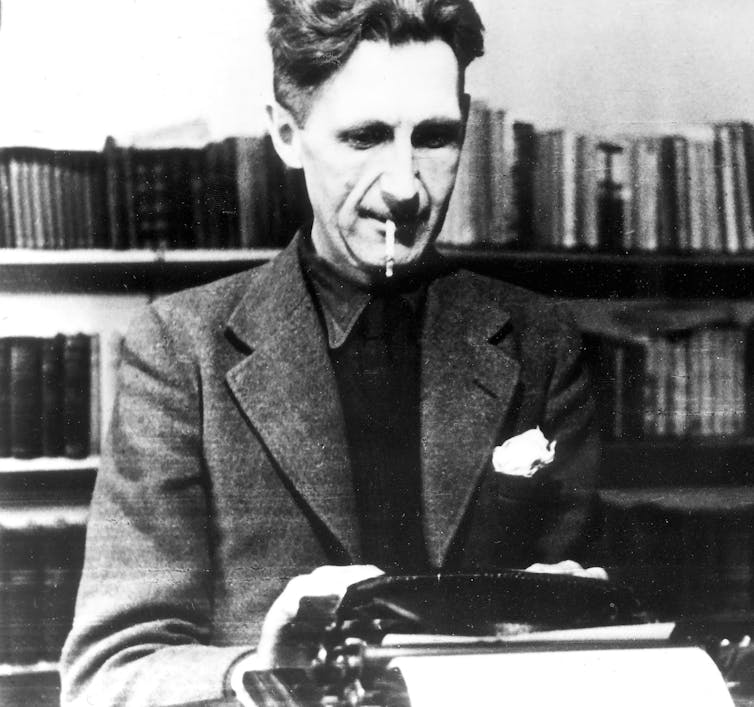
Tim Luckhurst, Durham University
During the second world war, Britain’s national daily newspapers usually supported the government’s portrayal of the national war effort as flawlessly heroic. This was a just war – and supported as such even by many Britons who, until 1940, had supported pacifist organisations such as the Peace Pledge Union.
But Tribune, the weekly newspaper founded by wealthy Labour MPs Sir Stafford Cripps and George Strauss and edited by Aneurin Bevan, was bolder. Promoting itself as “Fresh and Fearless” Tribune relished controversy. In September 1943, it celebrated the recruitment of an expert controversialist as its literary editor: George Orwell.
Orwell soon seized upon a topic the wartime coalition had worked assiduously to conceal: the deliberate killing of German civilians in colossal RAF raids on German cities. His pretext was the publication by Vera Brittain, the feminist and pre-war pacifist, of Seed of Chaos, her pungent denunciation of obliteration bombing. Supporting her case with eyewitness accounts by neutral Swiss and Swedish newspaper correspondents, Brittain recounted tales of corpses “all over streets and even in the tree-tops” and women “demented after the raids, crying continuously for their lost children”.
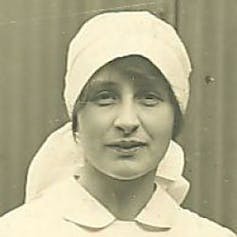
Detecting sanctimony, Orwell attacked head on with a piece entitled “As I Please”. There was, he wrote, “something very distasteful in accepting war as an instrument and at the same time wanting to dodge responsibility for its more obviously barbarous features”.
Talk of “limiting or humanising” total war was “sheer humbug”, Orwell insisted. Warming to his theme, he condemned Brittain’s “parrot cry” against “killing women and children” and insisted: “It is probably better to kill a cross section of the population than to kill only the young men.” If allied raids had killed 1.2 million German civilians, “that loss of life has probably harmed the German race somewhat less than a corresponding loss on the Russian front”.
Tribune’s readers were not unanimous in their support for Orwell. A flow of critical letters arrived but the literary editor did not budge. He “did not feel that mere killing is all important”. There was, he suggested, a moral case for killing German civilians. It brought home the nature of modern war and might make such conflict less likely.
Hard truths
Orwell’s stance was in stark opposition to government policy. This was to pretend that civilian deaths were rare collateral damage in raids meticulously targeted at German industrial and military infrastructure. In fact, Orwell’s defence challenged the Air Ministry as directly as Brittain’s moral outrage. Orwell recognised that area bombing was intended to cause mass civilian casualties and routinely did so.
Military historian and author Martin Middlebrook describes the British government’s statements about area bombing between 1942 and 1945 as “a three-year period of deceit on the British public and world opinion”. The areas attacked were “nearly always city centres or densely populated residential areas”. Britain had invested vast resources to build a fleet of heavy, four-engine bombers among which the Avro Lancaster was king. Mass raids against cities including Cologne, Essen and Hamburg soon demonstrated that the Lancaster’s brave, vulnerable crews could not hit targets with any precision.
Air Marshall Sir Arthur Harris pleaded with the prime minister to admit that raids involved the deliberate murder of civilians. In October 1943, he wrote to Churchill’s friend, the air minister Archibald Sinclair, demanding bombing tactics be “unambiguously and publicly stated”, writing:
That aim is the destruction of German cities, the killing of German workers and the disruption of civilised community life throughout Germany.
Harris wanted ministers to tell the public that the deaths of women and children were not a “byproduct of attempts to hit factories”. Such slaughter was one of the “accepted and intended aims of our bombing policy”.
Even when the Associated Press described Allied raids on Dresden as deliberate “terror bombing”, the government continued to deploy bland euphemisms. By recognising that RAF Bomber Command killed civilians as a conscious act of policy, Orwell and Tribune were playing with fire. They were not censored or condemned because it suited ministers to tolerate dissent in small circulation weekly titles. Such robust debate burnished Britain’s democratic credentials and reassured her American allies.
The last word
Brittain was not reassured. Writer Richard Westwood has shown that she resented Orwell’s attacks so intensely that she would revisit their dispute years after his death in order to “win her argument with Orwell in retrospect and when he could not respond”. This she attempted in Testament of Experience by quoting selectively from a report Orwell sent from Germany for The Observer in April 1945.
Brittain suggests he retracted his support for obliteration bombing. In fact, Orwell described damage done by allied bombs and argued that the Allies should not impose harsh reparations. A punitive approach would leave Germans dependent on international aid. He did not apologise for the RAF’s work. Instead, he repeated his defence that “a bomb kills a cross-section of the population whereas the men killed in battle are exactly the ones the community can least afford to lose”.
Orwell’s candour about area bombing was a robust example of dissenting wartime journalism. It demonstrated Tribune’s editorial courage and that the wartime coalition understood it could not reconcile defence of democracy with suppression of free speech.
Brittain was wrong to misrepresent him. His work illustrates how intelligent publications with thoughtful readers upheld Britain’s democratic tradition in wartime. Such journalism was not restricted to the left. The Spectator and The Economist played comparable roles on this and other subjects.
Tim Luckhurst will deliver his online lecture to the Centre for Modern Conflicts and Cultures via Zoom between 4pm and 5 pm on Tuesday, June 2, 2020. To attend please register here.![]()
Tim Luckhurst, Principal of South College, Durham University. He is a newspaper historian and an academic member of the University’s Centre for Modern Conflicts and Cultures., Durham University
This article is republished from The Conversation under a Creative Commons license. Read the original article.
Five books from the 19th century that will help you understand modern America better
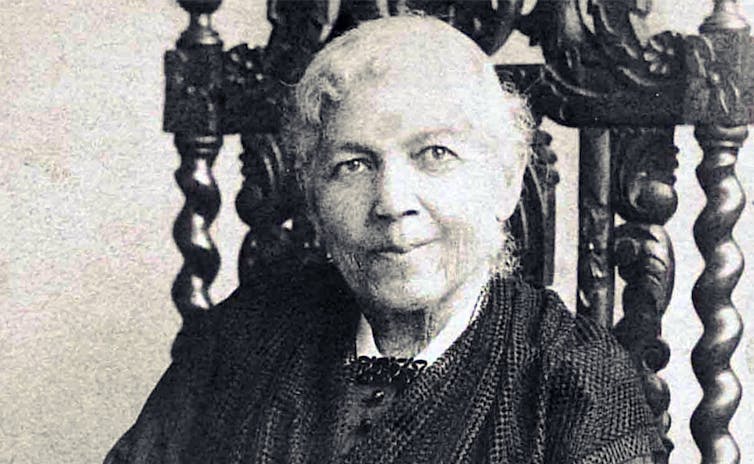
Wikimedia
Jillian Spivey Caddell, University of Kent
There’s a reason why one of the most important American novels of the twentieth century, Ralph Ellison’s Invisible Man (1952), begins with an epigraph by the writer Herman Melville and an allusion to the ghosts who haunted Edgar Allan Poe.
If you want to understand anything about the US in the 20th and 21st centuries, you need to know 19th-century American literature. The 19th century was when many, if not most, of the problems and ideologies that define American culture were codified, and literature of the period shows creative responses to this change.
For the first half of the 19th century, a lot of ink was spilt worrying whether the US would ever have a literature of its own. Many famous writers, including Ralph Waldo Emerson and Walt Whitman, urged Americans to leave English literature behind and take up specifically American themes, peoples and spaces.
At the same time, indigenous and enslaved Americans such as Harriet Jacobs, William Apess and Frederick Douglass used their pens and their rhetorical might to urge the US government to end race and ethnicity-based persecution and genocide.
After the American Civil War (1861-1865), writers rarely worried about whether the country had a literature and whether it was any good (it quite obviously was). They had innovated new genres (think of Emily Dickinson’s spare and searing verses) and turned their attention to issues of inequality embedded in American culture, as in Kate Chopin’s proto-feminist novella The Awakening and Charles Chesnutt’s exposure of racism and white supremacy in the post-Reconstruction South.
The following five works embody both the beauty of 19th-century American literature as well as its ability to change hearts and minds.
1. Incidents in the Life of a Slave Girl by Harriet Jacobs (1861)
Jacobs’ slave autobiography may not be the earliest written or the most famous, but it’s a devastatingly effective piece of storytelling that reads like a novel. Jacobs’ story of surviving slavery is so remarkable a narrative that sheds a rare light on the female experience of slavery.
Written under a pseudonym (Linda Brent), for a long time scholars assumed it must be fiction written by a white abolitionist. It wasn’t until African-American and feminist scholars unearthed the true identity in 1987 of Harriet Jacobs that the truth of her life story was accepted. Her narrative has since become a classic text of resistance, and it’s an essential read for understanding how white supremacy continues to function in America today.
2. Leaves of Grass by Walt Whitman (1855; last new edition 1881)
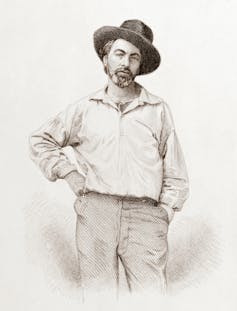
Wikimedia
Walt Whitman was a virtually unknown journalist and printer when the first edition of Leaves of Grass thundered upon the American literary world. The strange book listed no author and contained a casual engraving of Whitman with hand on hip and head cocked to the side. Most importantly, it included poems like the world had never seen before. Poems with long cascading lines and little rhyme or metre to be found. Whitman continually added to and edited Leaves of Grass over the course of his life, crafting his biography in poetry that we now recognise as revolutionary in both form and content. It made Whitman a touchstone for 20th-century poets like Allen Ginsberg and Adrienne Rich.
3. Little Women by Louisa May Alcott (1868-69)
If you’ve seen the most recent movie adaptation of Little Women (or any of the many previous adaptations), you’ll know that there’s something about Alcott’s novel (originally two novels, now published as one) that strikes a chord. Written in the shadow of the Civil War, Little Women draws upon Alcott’s own remarkable family life among famous Transcendentalist writers and thinkers in Concord, Massachusetts. It’s a skillfully crafted book about how the dreams of childhood do and, more often, do not come to fruition.
4. The Conjure Woman by Charles Chesnutt (1899)
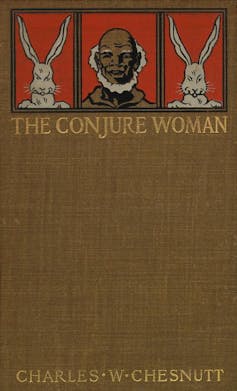
Wikimedia
In the late 19th centuries, a genre called “local color” dominated American literary magazines. These stories introduced areas of the increasingly expanding United States to those living in urban centres. African-American writer Charles Chesnutt turned this genre on its head in his series of “conjure” stories – tales of magic and cunning told by a formerly enslaved man named Julius to entertain a white northern businessman. Julius’ stories weave together African-American folklore and Southern Gothic ambience to expose white supremacy in the south before the Civil War. These stories indirectly comment on the racism that continued to haunt the post-Civil War US under a different guise.
5. Benito Cereno by Herman Melville (1855)
While these days Melville’s gargantuan 1851 novel Moby-Dick may be more famous (and
you should definitely read that too, when you have a few months to spare), nothing packs a punch quite like the novella Benito Cereno. Based on the story of a real slave revolt on board a ship, the text is paced like a horror story and full of ambivalences and doubled meanings. It reveals the true horror of race-based chattel slavery and anticipates the eruption of violence that would tear apart the United States within a few short years.![]()
Jillian Spivey Caddell, Lecturer in nineteenth-century American literature, University of Kent
This article is republished from The Conversation under a Creative Commons license. Read the original article.
